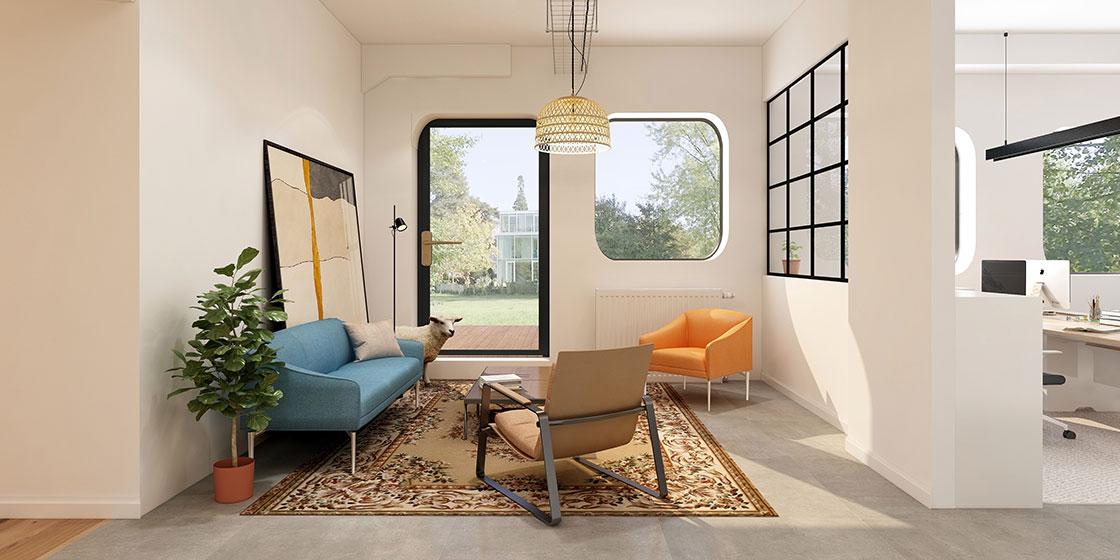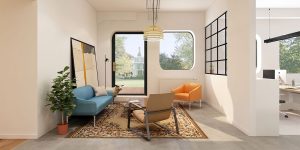
The Psychology Behind Effective Room Layouts
Have you ever walked into a room and immediately felt a sense of calm and relaxation? Or have you ever entered a space that made you feel cramped and uneasy? It’s not just an accident; it’s the psychology of room layout at play.

Whether you realize it or not, the way a room is laid out can have a profound impact on your mood, behavior, and overall well-being. As a homeowner or decorator, it’s crucial to understand the psychology behind effective room layouts to create spaces that truly enhance our everyday lives.
One of the key principles of room layout psychology is the idea of flow. Flow refers to how easily people can move through a space and how it affects the overall harmony and balance of a room. When a room has good flow, it feels natural and effortless to navigate, promoting a sense of ease and relaxation. On the other hand, poor flow can lead to feelings of frustration and discomfort.
When designing a room layout, it’s important to consider the purpose of the space. For example, in a living room, you want to create an environment that encourages conversation and social interaction. To achieve this, arrange the furniture in a way that facilitates face-to-face conversations. Placing sofas and chairs in a circular or U-shaped configuration can help create a sense of intimacy and connection.
In bedrooms, the layout should promote relaxation and peacefulness. The bed, as the focal point of the room, should be positioned in a way that provides a clear view of the entrance while also allowing for easy access to the bathroom or closet. Avoid placing the bed directly in line with a door, as this can create a sense of vulnerability and disrupt sleep quality.
Another important aspect of room layout psychology is the concept of balance. Balance refers to the distribution of visual weight in a room and can greatly influence our perception of a space. A well-balanced room feels harmonious and visually pleasing, while an unbalanced room can feel chaotic and overwhelming.
To achieve balance in a room, consider the size, shape, and placement of furniture and decor elements. Symmetrical arrangements, where items are evenly distributed on either side of a central axis, are a classic way to achieve balance. However, asymmetrical arrangements can also be effective, as long as there is a sense of balance created by varying heights, textures, or visual weights.
Color psychology also plays a significant role in room layouts. Different colors evoke different emotions and can greatly impact our mood and behavior. For example, warm colors like red or orange tend to stimulate and energize, while cool colors like blue or green have a calming and soothing effect.
When choosing the color scheme for a room, think about the main activities that will take place there. For a home office or study area, consider using shades of blue to promote focus and concentration. In a bedroom, opt for softer, cooler hues to create a serene and peaceful atmosphere. Be mindful of contrast as well, as some colors can clash and create an uncomfortable visual experience.
In addition to flow, balance, and color psychology, there are other factors to consider when designing a room layout that supports our well-being. Lighting, for example, can greatly impact our mood and productivity. Natural light has been shown to improve mood and energy levels, so incorporating large windows or skylights into the design can help create a positive and uplifting space.
Furthermore, the arrangement of furniture can also impact our behavior. For example, placing a desk facing a window can increase productivity and creativity, as it allows for better concentration and a connection with the outside world. Intentional placement of mirrors can also enhance natural light and make a room feel more spacious.
When it comes to room layouts, it’s important to find a balance between personal preferences and the principles of psychology. Experiment with different arrangements and pay attention to how they make you and others feel in the space. Ultimately, the goal is to create rooms that not only look visually appealing but also support our well-being and enhance our daily lives.



